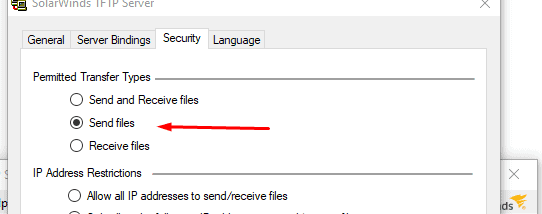
The above example offers the verbose output when that mode is enabled. tftp> get HERE_I_AM getting from 192.168.0.9:HERE_I_AM to HERE_I_AM Received 7 bytes in 0.1 seconds My sample file HERE_I_AM can be retrieved as follows. It is simply “get” to receive and “put” to place. If you’re at all familiar with FTP on the command line, then you’ll have no difficulty picking up the parlance. That directory - from which our faithful daemon is serving - is called /srv/tftp, as we can see in Listing 3.īecause this is just a plain text file, there’s little need to enable binary mode, and we’ve already written verbose, so now it’s just a case of transferring our file. I then moved that file into our default TFTP directory, which we saw in use previously in the main config file, /etc/nf. This means that the file HERE_I_AM contains the word “hello”. To give us some content to download, I created a simple text file like this: # echo hello > HERE_I_AM Or, you can force binaries to download correctly with: tftp> binary You can opt to download binaries or plain text files by typing this for plain text: tftp> ascii Mode: netascii Verbose: off Tracing: off Rexmt-interval: 5 seconds, Max-timeout: 25 secondsĪt this point, I prefer to use verbose output by simply typing this command: tftp> verbose Next, you can run a “status” command as follows: tftp> status Connected to 192.168.0.9. (If it didn’t work, check your firewalling or you might “telnet” to port 69 on your TFTP’s server IP address). You can connect like this to the server from the client: # tftp 10.10.10.10 Once you know the IP address, it’s very simple to get going. If you look up your server’s IP address using a command like the one below, then it’s possible to connect to your TFTP server from anywhere (assuming that your TCP Wrappers configuration or IPtables rules let you, of course).
Windows tftp client command line example install#
Red Hat derivatives should manage a client install as so: # yum install tftp Thankfully, we can install one very easily: # apt-get install tftp

To test your server, you obviously need a client to connect with.
Windows tftp client command line example how to#
You can do this with some comfort now that you know how to secure your server a little better. Now let’s try and move some files around. In previous articles, we introduced TFTP and discussed why you might want to use it, and we looked at various configuration options.


 0 kommentar(er)
0 kommentar(er)
